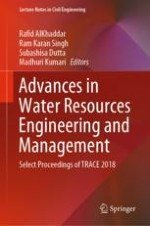This book comprises select papers presented at the International Conference on Trends and Recent Advances in Civil Engineering (TRACE 2018). The book covers inter-disciplinary research and applications in integrated water resource management, river ecology, irrigation system, water pollution and treatment, hydraulic structure and hydro-informatics. The topics on water resource management include technological intervention and solution for climate change impacts on water resources, water security, clean water to all, sustainable water reuse, flood risk assessment, interlinking of rivers and hydro policy. The contents of this book will be useful to researchers and professionals working in the field of water resource management and related policy making.
